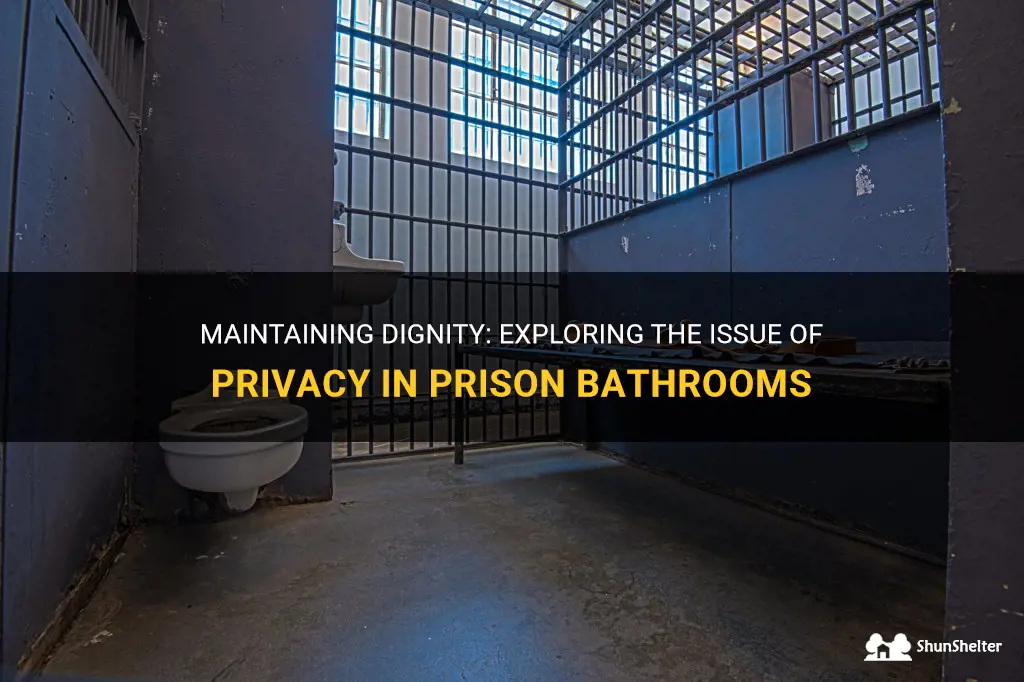
Imagine not having access to the privacy of your own bathroom. This is the reality for thousands of inmates in prisons around the world. The question of whether inmates can use the bathroom privately in prison is a topic of debate and concern. While some argue that privacy is a basic human right that should be afforded to all, others argue that maintaining order and security in a prison setting may take precedence over individual privacy. In this article, we will explore the different perspectives on this issue and delve into the complexities of providing bathroom privacy in prison.
What You'll Learn
- How much privacy do prisoners have when using the bathroom in prison?
- Are there individual bathroom stalls in prison, or are they shared by multiple inmates?
- Do prisoners have the option to use the bathroom privately, or are they constantly under surveillance?
- Are there any regulations or procedures in place to ensure privacy for inmates when using the bathroom?
- How do privacy concerns around bathroom use in prison impact the psychological well-being of inmates?

How much privacy do prisoners have when using the bathroom in prison?
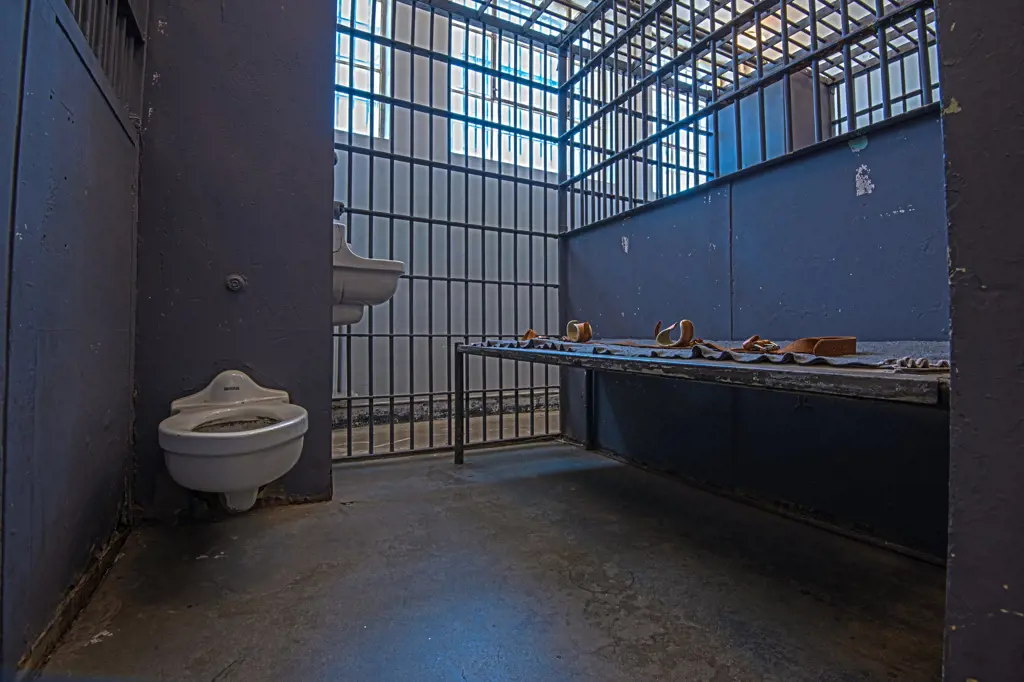
Prison is a place where individuals who have been convicted of crimes are incarcerated. It is a controlled environment with specific rules and regulations to maintain safety and security. This includes ensuring that prisoners' privacy is balanced with the need for supervision and control. One aspect of privacy that is often questioned is the use of bathrooms in prison. In this article, we will explore how much privacy prisoners have when using the bathroom in prison.
Prison bathrooms are designed with security and control in mind. The layout of these facilities is usually open, with multiple toilets and sinks in a shared space. This design allows for easy supervision by correctional officers, reducing the risk of illegal activities or violence taking place in these areas. It also ensures that prisoners are not isolated, which could lead to potential harm or concealment of contraband.
While the layout of prison bathrooms may lack the traditional privacy found in public restrooms, efforts are made to provide prisoners with a reasonable level of privacy. For example, partitions or dividers are typically installed between toilets to give some physical separation and modesty. These dividers can range from partial height to full height, depending on the facility and its security requirements.
In addition to physical privacy, correctional officers are trained to respect prisoners' dignity and give them as much privacy as possible during their bathroom breaks. Officers will usually avoid unnecessary observation and provide some level of discretion when monitoring these areas. However, they may need to periodically check on prisoners for safety and security purposes.
It is important to note that while efforts are made to provide privacy, prisons are still controlled environments, and certain security measures may limit privacy. For instance, CCTV cameras may be installed in these areas for surveillance purposes. This allows officers to monitor activity and ensure the safety of all individuals involved. These cameras are typically angled to avoid capturing explicit visuals but can still compromise some level of privacy.
Moreover, prisoners should understand that their actions in the bathroom are subject to general guidelines and restrictions. For example, activities such as smoking, drug use, or any other illegal behavior are strictly prohibited. Any violation of these rules will result in disciplinary action, which may impact the overall level of privacy granted.
To further ensure safety and prevent abuse, prisons often have complaint procedures in place to address any privacy concerns. Prisoners are encouraged to voice their grievances through formal channels to seek resolution. This can include reporting any violations of privacy, mistreatment, or any other issue related to the use of the bathroom facilities.
In conclusion, prisoners in a correctional facility have a reasonable level of privacy when using the bathroom. While the layout may lack individual stalls like traditional public restrooms, partitions or dividers between toilets provide some degree of separation. Correctional officers also exercise discretion and respect prisoners' dignity during their bathroom breaks. However, the need for security and control means that privacy may be limited in certain aspects. CCTV cameras may be installed for surveillance, and general guidelines and restrictions regarding conduct must be followed. Prisoners are encouraged to make use of complaint procedures to address any privacy concerns they may have.
Revamp Your Bathroom Vanity: Can You Reface It?
You may want to see also

Are there individual bathroom stalls in prison, or are they shared by multiple inmates?
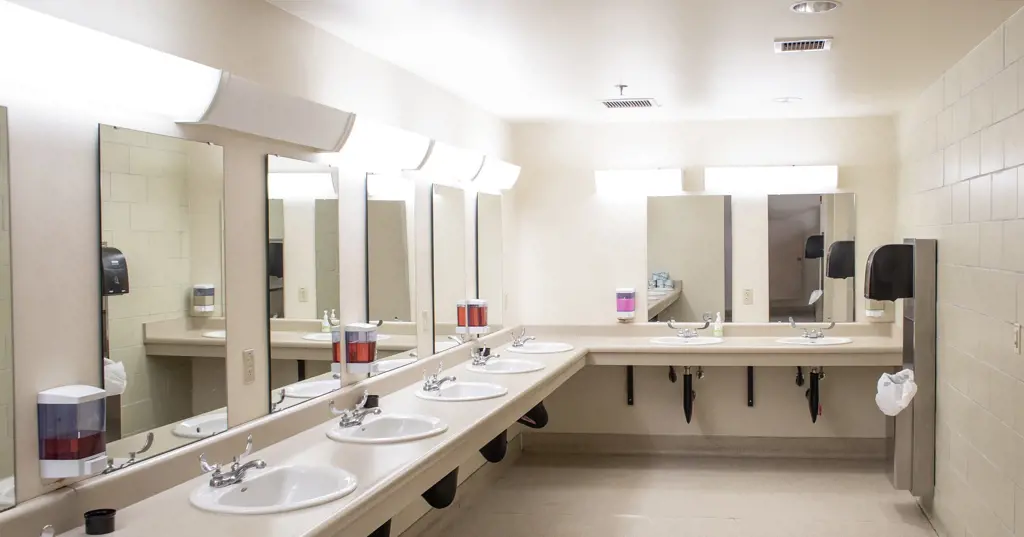
When it comes to the topic of bathroom facilities in prisons, there is often a lot of curiosity about whether inmates have access to individual stalls or if they are shared among multiple individuals. This article aims to provide a comprehensive answer to this question by examining the various factors that come into play in prison restroom arrangements.
In most cases, prisons are designed with communal restroom facilities rather than individual stalls for inmates. This is primarily due to financial constraints and the need to efficiently accommodate a large number of inmates. Building individual stalls for each inmate would require ample space and resources, which are often limited in a prison setting.
Instead, most prison restrooms feature a row of toilets and urinals that are separated by low partitions. These partitions provide some degree of privacy, but they do not offer the same level of privacy as individual stalls. Inmates are typically expected to use the facilities in a respectful and discreet manner to maintain a sense of privacy within the communal space.
Having communal restroom facilities can also be seen as a means of maximizing supervision and security within the prison. By having inmates use shared facilities, corrections officers are able to maintain a visual presence and ensure that there is no illicit activity taking place within the restrooms. This can help prevent incidents such as drug use, violence, or escape attempts.
While communal restrooms are the norm in most prisons, it is important to note that there may be exceptions to this rule. Some prisons, particularly those with higher security levels or specialized housing units, may offer individual stalls for certain inmates. This could be due to specific security or safety concerns, such as protection from potential assault or illness transmission.
In addition to communal restrooms, most prisons also provide other hygiene facilities such as sinks, showers, and mirrors. These facilities are usually shared among multiple individuals as well, but efforts are made to ensure that inmates have reasonable access to basic hygiene needs.
Overall, the design of bathroom facilities in prisons is heavily influenced by factors such as cost, space constraints, security considerations, and the need for efficient supervision. While individual stalls are not the standard in most prisons, communal restrooms with partitioned toilets and urinals are the most common arrangement. Exceptions to this norm may exist in certain high-security or specialized units, where individual stalls may be provided for specific reasons.
Exploring the Possibility of Using Two PVC Pipes for a Bathroom Sink Drain: A Comprehensive Guide
You may want to see also

Do prisoners have the option to use the bathroom privately, or are they constantly under surveillance?
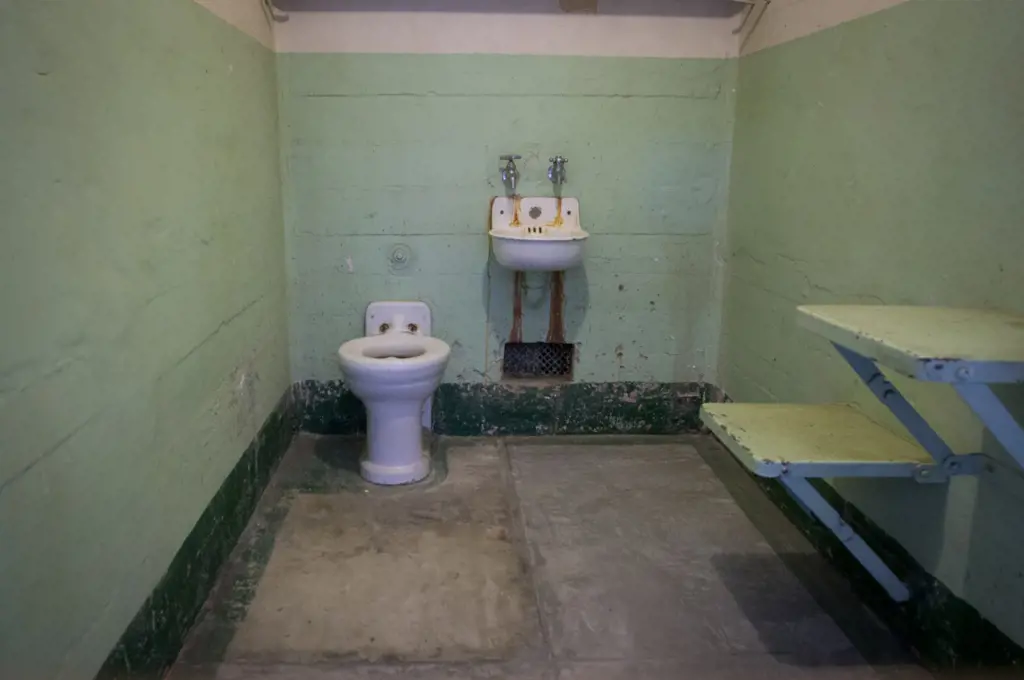
When it comes to the rights and privacy of prisoners, there are many regulations and protocols in place to ensure their safety and security. One aspect of a prisoner's daily routine that often raises questions is the use of the bathroom. Are prisoners constantly under surveillance when using the bathroom, or do they have the option to use it privately? Let's explore this topic and shed some light on how these situations are typically handled in correctional facilities.
In most prisons and correctional facilities, prisoners do not have the option to use the bathroom privately. Due to the nature of the environment and the need for security, most prison systems incorporate various surveillance measures to monitor and control the activities of inmates. This includes the use of cameras and constant supervision by guards.
However, it's important to note that while prisoners may not have complete privacy when using the bathroom, measures are in place to protect their dignity and ensure a certain level of privacy. For example, many correctional facilities have individual stalls with walls that provide some level of visual separation between prisoners. Additionally, the use of curtains or partitions may be implemented to enhance privacy.
Furthermore, correctional officers are trained to respect the privacy and dignity of prisoners while still maintaining security. They are often briefed on appropriate conduct and protocols when assisting inmates in bathroom-related activities. This includes giving prisoners a reasonable amount of time and space to use the bathroom without unnecessary intrusion. Officers are also trained to intervene if they suspect any illegal or dangerous activities taking place in the bathroom.
In some cases, prisoners may be granted additional privacy under special circumstances. For instance, inmates with medical conditions or disabilities that require assistance may be provided with a higher level of privacy as dictated by their specific needs. This could involve the use of separate bathroom facilities or additional support from medical staff.
However, it's important to recognize that there are significant variations in prison systems across different countries and even within different states or regions. While the general principles outlined above should apply to most cases, there may be exceptions or different policies in place depending on the specific facility and its regulations.
In conclusion, prisoners generally do not have the option to use the bathroom privately due to the need for security and surveillance in correctional facilities. However, efforts are made to preserve their privacy and dignity with the use of individual stalls, partitions, and respectful conduct by correctional officers. Special accommodations may also be provided for inmates with medical conditions or disabilities. It is important to recognize that practices may vary across different prison systems, but the overall goal is to balance security and privacy while ensuring the well-being of prisoners.
Is Glossy Tile a Good Choice for Your Bathroom Floor?
You may want to see also

Are there any regulations or procedures in place to ensure privacy for inmates when using the bathroom?
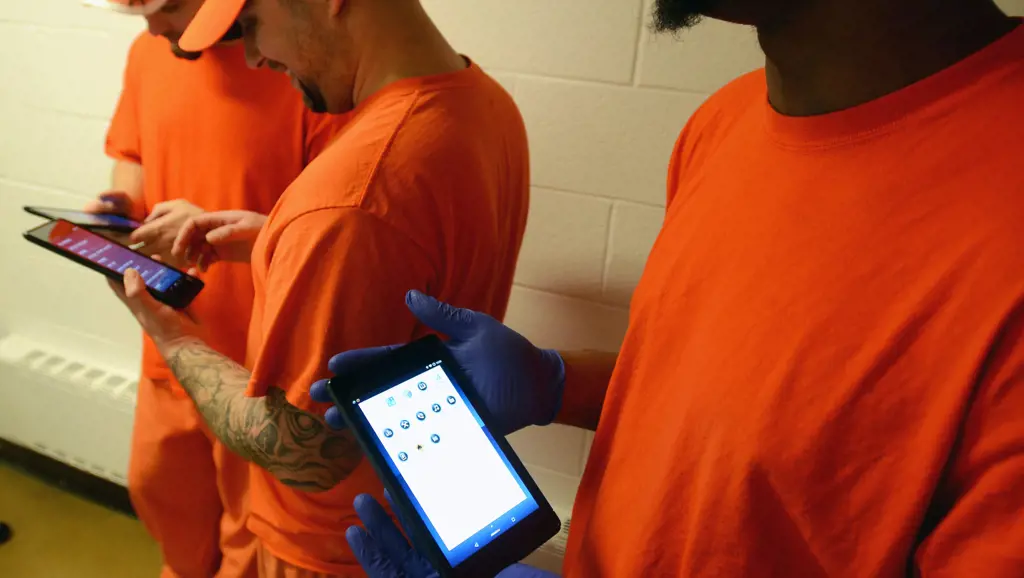
Privacy is a fundamental right that should be respected for all individuals, including inmates. When it comes to using the bathroom, there are numerous regulations and procedures in place to ensure that inmates have their privacy protected.
One of the primary regulations related to inmate privacy is the Eighth Amendment of the United States Constitution, which prohibits cruel and unusual punishment. This includes protecting an inmate's right to privacy, even in the bathroom. In addition to constitutional protections, there are also specific regulations and procedures implemented within correctional facilities to ensure privacy.
Step-by-step procedures are often put in place to ensure that inmates have privacy when using the bathroom. These procedures may include assigning inmates to individual cells or stalls with doors that provide adequate privacy. In some cases, inmates may be provided with individual toilet facilities within their cells. This helps to reduce the risk of privacy violations and ensures that inmates have a reasonable expectation of privacy.
Furthermore, correctional facilities are required to provide policies that address inmate privacy and confidentiality. These policies may outline specific guidelines for correctional staff to follow when inmates are using the bathroom. Staff members are typically trained to respect inmate privacy and to refrain from any unnecessary intrusion or monitoring during these private moments.
To enforce these regulations and procedures, correctional facilities often conduct regular inspections and audits. These inspections ensure that the physical facilities, such as bathrooms and toilets, are in proper working order and provide adequate privacy for inmates. Inspections also help to identify any potential privacy violations or concerns that need to be addressed.
Additionally, there are legal safeguards in place to protect inmate privacy. Inmates have the right to file grievances or complaints if they feel their privacy has been violated. Correctional facilities are required to investigate these complaints and take appropriate action to rectify any privacy violations.
It is important to note that while there are regulations and procedures in place to protect inmate privacy, there may still be instances where privacy is compromised due to the nature of correctional facilities. For example, in communal living situations, such as dormitory-style housing, it may be inevitable that some level of privacy is sacrificed. However, correctional facilities strive to minimize these instances and provide inmates with as much privacy as possible.
In conclusion, there are numerous regulations and procedures in place to ensure privacy for inmates when using the bathroom. These protections are essential for preserving an inmate's dignity and respecting their fundamental rights. By implementing step-by-step procedures, establishing policies, conducting regular inspections, and addressing inmate complaints, correctional facilities strive to provide inmates with the necessary privacy they deserve.
The Pros and Cons of Installing a Suspended Ceiling in a Bathroom
You may want to see also

How do privacy concerns around bathroom use in prison impact the psychological well-being of inmates?
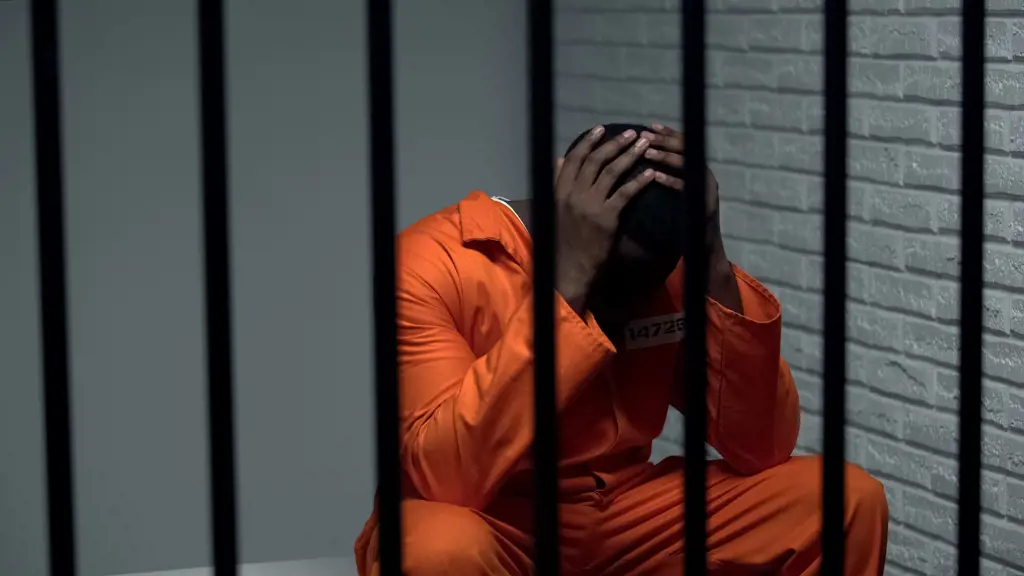
Introduction:
Privacy concerns around bathroom use in prison can have a significant impact on the psychological well-being of inmates. The lack of privacy in this area can lead to feelings of embarrassment, shame, and degradation. This article will delve into the various ways in which privacy concerns affect inmates' mental health, with a focus on the psychological repercussions of the lack of bathroom privacy in prison.
Embarrassment and Shame:
One of the main psychological consequences of the lack of bathroom privacy in prison is the overwhelming sense of embarrassment and shame that inmates experience. Having to use communal bathrooms or open toilets can make individuals feel exposed and vulnerable, leading to a loss of dignity. This constant state of embarrassment can have a profound impact on their self-esteem and sense of self-worth.
Loss of Autonomy:
Privacy concerns around bathroom use also result in a loss of autonomy for inmates. In a system where every aspect of their life is controlled and monitored, the lack of private bathroom facilities reinforces their lack of agency and control over their own bodies. This loss of autonomy can contribute to feelings of helplessness and frustration, further deteriorating their psychological well-being.
Psychological Well-being:
The constant exposure to public bathrooms has a negative impact on the overall psychological well-being of inmates. It creates an environment that fosters anxiety and stress due to the lack of privacy. Feeling constantly watched and judged can lead to heightened levels of anxiety, which in turn can lead to mental health disorders such as depression, post-traumatic stress disorder (PTSD), and even suicidal thoughts.
Impact on Gender Identity:
Another aspect to consider is the impact of privacy concerns on inmates’ gender identity. For transgender individuals, the lack of private bathroom facilities can exacerbate their already challenging situation. Transgender individuals may experience heightened gender dysphoria when forced to use communal bathrooms that do not align with their gender identity, often resulting in additional psychological distress.
Recidivism Rates:
The negative psychological impact of the lack of bathroom privacy in prison can also contribute to higher recidivism rates. Inmates who experience constant humiliation and degradation may struggle to reintegrate into society after their release, leading to a higher likelihood of reoffending. Addressing privacy concerns around bathroom use in prison can, therefore, play a vital role in reducing recidivism rates and promoting successful reintegration.
Privacy concerns around bathroom use in prison have a significant impact on the psychological well-being of inmates. The lack of privacy not only leads to feelings of embarrassment and shame, but also results in a loss of autonomy and overall psychological distress. It is important for prison systems to recognize the importance of privacy in maintaining the mental health of inmates and to provide facilities that uphold their dignity and well-being. By addressing these issues, society can work towards fostering a more humane and rehabilitative approach to incarceration.
Understanding the Safety of Mixing Bathroom Cleaner and Water
You may want to see also
Frequently asked questions
In most cases, inmates do not have complete privacy when using the bathroom in prison. Most prison facilities have communal or open-style bathrooms where multiple inmates may be using the facilities at the same time. This lack of privacy is a common aspect of daily life in prison.
There are some circumstances where inmates may have a degree of privacy when using the bathroom. For example, in certain high-security or disciplinary units, individual cells may have a small enclosed area for a toilet and sink. However, these exceptions are typically rare and limited to specific situations within the prison system.
Prison bathrooms are designed to prioritize safety and security. While inmates may not have complete privacy, certain measures are in place to maintain order and prevent violence. These can include open-style bathroom stalls without doors or partitions to minimize potential hiding places and reduce the risk of illicit activities.
Coping mechanisms vary among inmates, but many adapt to the lack of privacy by establishing an unspoken code of conduct. This can include respecting each other's personal space, maintaining a sense of modesty, and avoiding unnecessary eye contact or conversation while using the facilities. Some inmates may also adjust their bathroom routines to avoid peak times when the facilities are more crowded, allowing for a bit more privacy.







